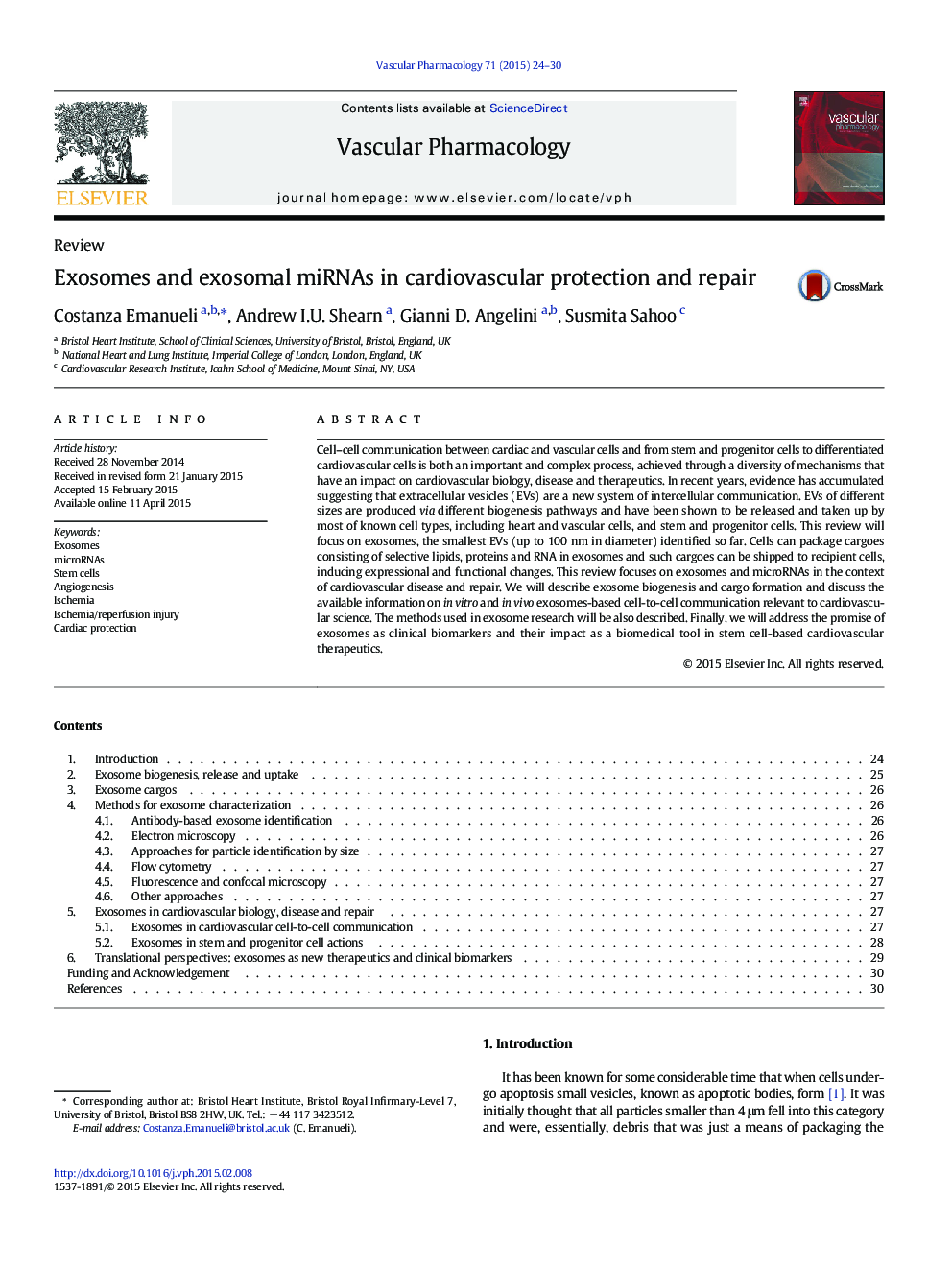| Article ID | Journal | Published Year | Pages | File Type |
|---|---|---|---|---|
| 5847232 | Vascular Pharmacology | 2015 | 7 Pages |
Cell-cell communication between cardiac and vascular cells and from stem and progenitor cells to differentiated cardiovascular cells is both an important and complex process, achieved through a diversity of mechanisms that have an impact on cardiovascular biology, disease and therapeutics. In recent years, evidence has accumulated suggesting that extracellular vesicles (EVs) are a new system of intercellular communication. EVs of different sizes are produced via different biogenesis pathways and have been shown to be released and taken up by most of known cell types, including heart and vascular cells, and stem and progenitor cells. This review will focus on exosomes, the smallest EVs (up to 100Â nm in diameter) identified so far. Cells can package cargoes consisting of selective lipids, proteins and RNA in exosomes and such cargoes can be shipped to recipient cells, inducing expressional and functional changes. This review focuses on exosomes and microRNAs in the context of cardiovascular disease and repair. We will describe exosome biogenesis and cargo formation and discuss the available information on in vitro and in vivo exosomes-based cell-to-cell communication relevant to cardiovascular science. The methods used in exosome research will be also described. Finally, we will address the promise of exosomes as clinical biomarkers and their impact as a biomedical tool in stem cell-based cardiovascular therapeutics.
Graphical abstractDownload high-res image (186KB)Download full-size image
